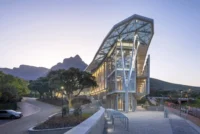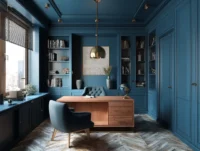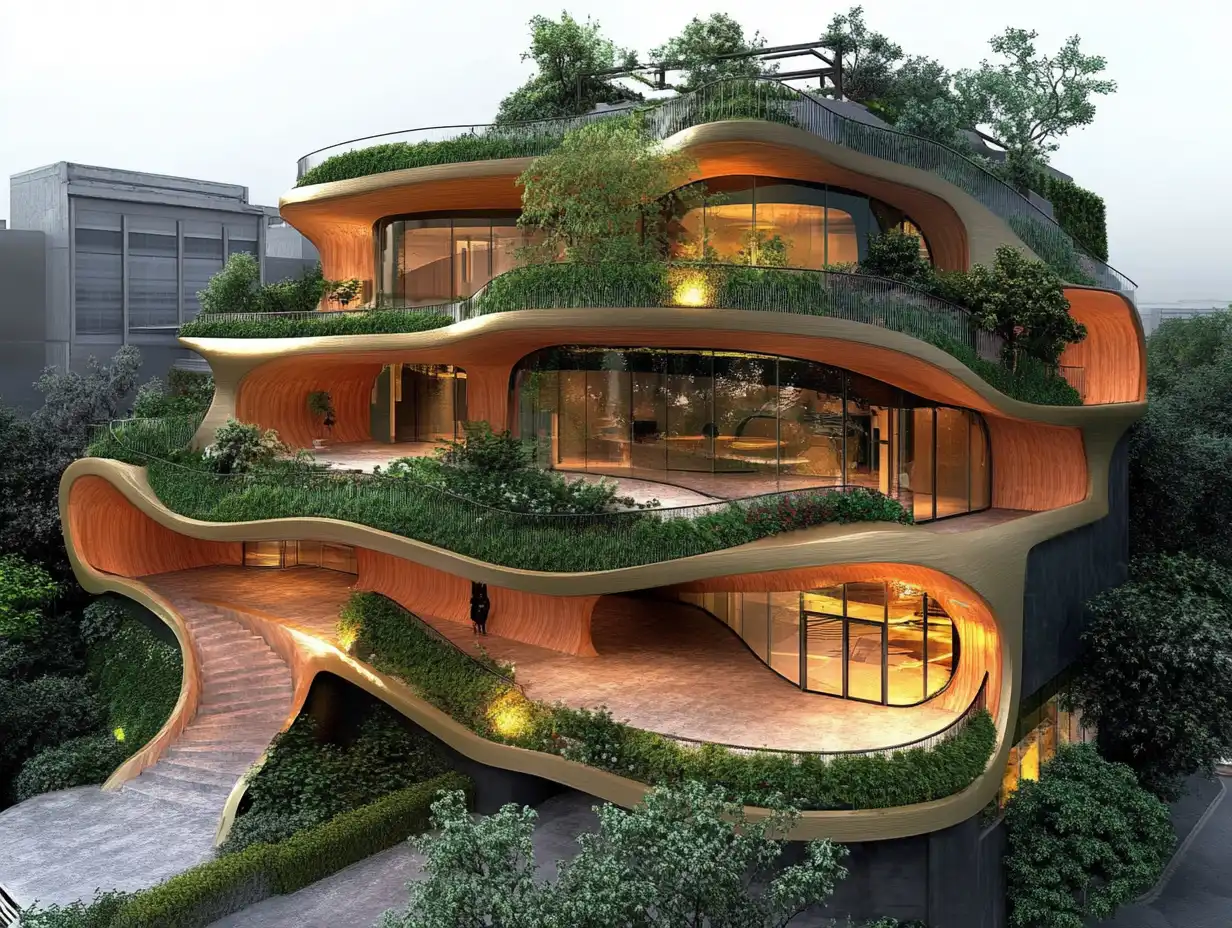Designed by KODE Architects in partnership with CNS Architects, the Modern History of Christianity Museum is not just a building—it is a spatial embodiment of Christian theology. Rooted in the foundational concept of the Holy Trinity, the design reflects a deep theological narrative: relationship, presence, and transcendence. The museum invites visitors not only to learn about the historical journey of Christianity but to experience the spiritual essence that underpins it.

A Triangular Courtyard: Heaven and Earth Intersect
Symbolic Geometry in Sacred Space
At the heart of the museum lies its most powerful symbolic gesture: a triangular courtyard. Closed on all sides yet open to the sky, the courtyard serves as an architectural metaphor for divine aspiration—an earthly space reaching toward the heavenly. The triangle, a shape traditionally associated with the Trinity in Christian iconography, reinforces the idea of unity and relational presence between the Father, Son, and Holy Spirit.
While the ground floor focuses on human interaction and historical narratives, the courtyard functions as a vertical spiritual axis, drawing the eyes—and the heart—upward. This subtle transition from horizontal to vertical experience mirrors the Christian journey of earthly life toward divine communion.

Corridor-Centric Planning: A Journey Through Faith
Narrative Flow and Spatial Orientation
The spatial organization of the museum was intentionally conceived as a corridor-type circulation system, guiding visitors in a unidirectional flow through a series of experiential exhibition zones. Each level of the museum is structured around this looped corridor, which interacts dynamically with the triangular courtyard at the center.
This layout not only enhances the narrative rhythm of the exhibits but also symbolizes the pilgrimage-like nature of faith—a continuous journey around a sacred center. The path guides visitors around and alongside the courtyard, allowing moments of reflection and symbolic orientation back to the core Christian message.
The circulation strategy also enhances functional efficiency, allowing the museum to accommodate large visitor volumes while maintaining a sense of intimate engagement with the exhibits and spiritual space.
Multipurpose Lower Levels: Community, Culture, and Communication
Engaging with the Surrounding Context
Beyond its spiritual and symbolic focus, the museum is also a civic and cultural space. Located on the lower levels are multipurpose areas that support community programs, educational workshops, and temporary exhibitions. These spaces are designed to communicate with the surrounding urban fabric, reflecting Christianity’s mission to engage with the world.
Large openings and visual transparency are achieved through architectural devices that frame views and penetrate boundaries—a metaphor for the church’s role as both sanctuary and active participant in society. These design elements draw the external environment into the building, encouraging a dialogue between sacred interiority and public exteriority.

Abstraction as Sacred Aesthetic
A Minimalist Interpretation of Christian Architecture
Rather than relying on traditional iconography or ornate embellishment, the architects pursued a minimalist and abstract approach. The museum is defined by clean lines, restrained materiality, and geometric purity, which align with the contemplative atmosphere often sought in spiritual spaces.
The abstraction allows the architecture to serve as a symbolic vessel rather than a didactic structure. This neutrality invites personal reflection and encourages visitors to encounter the Christian story in a way that is emotionally and intellectually open-ended.
Merging Experience, Space, and Spirit
The Modern History of Christianity Museum is a profound example of faith-informed design, where architectural language is used to express theological truths. By placing the relational core of Christianity—the Trinity—at the center of its spatial logic, the architects have created more than a building. They have constructed a narrative journey, a place for reflection and connection, and a venue that bridges heaven and earth.
This museum is not simply about documenting Christian history—it is about experiencing it through space, light, and form. Through careful balance of abstraction, symbolism, and community functionality, the project illustrates how contemporary architecture can honor spiritual traditions while serving the needs of the modern world.
Photography: GUUIJIN
- Abstract Christian architecture
- Architectural storytelling faith
- Christian symbolism in architecture
- CNS Architects religious architecture
- Community and faith architecture
- Contemporary Christian museums
- Corridor circulation museum design
- Faith-inspired architecture
- Holy Trinity architecture design
- KODE Architects Christian Museum
- Minimalist church architecture
- Modern History of Christianity Museum
- Museum architecture Netherlands
- Museum design for spirituality
- Public spiritual architecture
- Religious cultural spaces
- Religious narrative architecture
- Sacred geometry in architecture
- Spiritual architecture design
- Triangular courtyard symbolism






















































Leave a comment